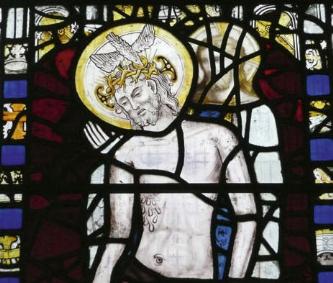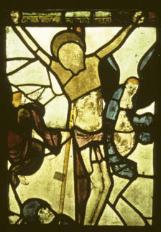

4
BCD Special Report on
Historic Churches
17th annual edition
of stained glass images in Cambridgeshire
and Sufolk, is another well documented
example of ofcially sanctioned action against
‘superstitious’ images. Other losses, such
as the medieval glazing of Worcester and
Peterborough Cathedral cloisters, were the
unfortunate result of an unruly soldiery.
It is easy to overemphasise the extent
of the losses incurred during this period.
When the city of York fell to parliamentary
forces in July 1644, the intervention of the
parliamentary commander, and Yorkshireman
Lord Tomas Fairfax, ensured that the
articles of surrender stipulated ‘that neither
churches nor other buildings be defaced’.
While a quantity of plate, three copes and the
monumental brasses were lost in the aftermath
of the surrender, the Minster’s medieval
windows remained largely unharmed. It has
been suggested that damage to the heads
of the fgures of archbishops in the 14th-
century Great West Window refect deliberate
iconoclasm, but the deterioration of the
medieval glass is just as likely an explanation.
Writing in the 1690s, antiquarian James
Torre was able to describe in considerable
detail stained glass in almost every Minster
window, although he described one window in
the north aisle as having been plain glazed as
a consequence of the glass being removed and
sold during ‘the late Troubles’. His reticence in
identifying the religious subjects depicted in
the windows may refect a continued anxiety
about the popish associations of the medium.
Despite Fairfax’s eforts, not all the
windows of the city churches escaped
unscathed, as in 1645 superstitious images
in the windows of St Martin’s Coney
Street were ordered to be ‘taken away or
defaced’. Te damaged Trinity images in
the churches of St Martin (above) and Holy
Trinity, Goodramgate may well also refect
iconoclasm at this time, as parliament had
renewed injunctions intended to stamp out
images of the three persons of the Trinity.
Elsewhere, parishioners went to sometimes
extraordinary lengths to protect their windows
from loss. In the Gloucestershire parish
of Fairford, for example, the 28 windows
containing medieval glass survived the
Reformation, despite the Puritan zeal of Bishop
John Hooper, the second bishop of the newly
formed diocese of Gloucester. Te windows
enjoyed considerable celebrity and in the early
years of the 17th century attracted the attention
of two Oxford poets. Te arrival in nearby
Cirencester of parliamentary troops in the
summer of 1643 brought danger. In Cirencester
much damage was done, and in anticipation of
iconoclasm William Oldisworth, to whom the
Fairford rectory had been leased, took action
to safeguard the glass. Rather than remove
the windows wholesale, key details, especially
heads and upper part of fgures, including the
head of the Crucifed Christ in the east window
(below left), were removed for safekeeping,
in some cases never to return. In 1648, while
the Commonwealth still prevailed, the parish
commissioned local glaziers John and Edward
Scriven, to restore the windows, although in
1716 antiquarian Tomas Hearne reported
that some glass removed during the civil war
had still not been returned to the windows.
Hearne’s account also reveals that the
aged parish clerk, blind Richard Walklett,
conducted guided tours of the window,
reciting from memory the words of an old
‘Parchment roll’ that had since been stolen.
Walklett’s commentary shows that scenes
of pre-Reformation Catholic apocryphal
legend had been transformed into scenes of
impeccable protestant Bible history, preserved
for their didactic value. Te scene of Joachim
and Anna at the Golden Gate, for example,
had become ‘the salutation of Zacharias
& his wife Elizabeth’, while the birth of the
Virgin and her reception into the temple had
become ‘the birth of St John the Baptist and
the Virgin’s visit to her cousin Elizabeth’.
Te post-Reformation maintenance of York
Minster’s windows illustrates only too well
the impact of the Reformation on the craft of
stained glass. Te craft which had once been
so prominent in the life of the medieval city
had dwindled away and although the Minster’s
windows continued to be repaired, the task was
entrusted to plumber-glaziers such as Edward
Crofts, with apparently limited glass-painting
skills. When the nave windows were repaired
in the second half of the 18th century, the
Minster’s own glaziers undertook the glazing
repairs, while new painted glass was provided
by William Peckitt (1731–95), the self-taught
stained glass painter who was to become the
best-known exponent of the craft of his day.
Some of Peckitt’s earliest work for the
Minster was less than a success and his 1754
fgure of St Peter for the south transept failed
and was removed to be replaced with a new
and technically more profcient version in
1768. His provision of painted glass for the
restoration of the west window and the two
west windows in the nave aisles (1757–8)
cannot be judged to be entirely successful
either. However, he was careful to renew only
those parts of the heads that were missing,
and in the adaptation and reinstallation in the
Minster of the late 14th-century Jesse Tree in
c1765 Peckitt showed remarkable sensitivity to
the historic glass. In his later south transept
fgures of the 1790s (Abraham, Solomon and
Moses), the infuence of late medieval canopy
design at New College, Oxford, can clearly
be seen (facing page, small illustration).
It has been suggested that Peckitt may
have had a hand in the restoration of the
Minster’s Great East Window, the masterpiece
of Coventry glass painter John Tornton,
made between 1405 and 1408. Te complicated
Damaged 15th-century Trinity image, St Martin’s, Coney Street, York
An early 16th-century Crucifxion in the east window of
St Mary, Fairford, with head of Christ removed, prior to
restoration by Barley Studio (Photo: Barley Studio)